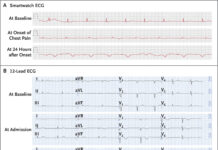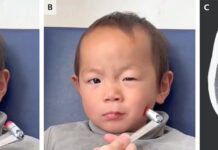- Multiple congenital abnormalities in both the upper and lower limbs is a rare clinical presentation.
- This case presents a rare syndrome of five finger hands and polydactyly of the feet in a 22-year-old.
A 22-year-old male patient presented to the Welfare Organisation with five finger hands and polydactyly of the feet. The patient’s family history was negative for any congenital abnormalities and his parents were non-consanguineous.

On physical examination, the hands and feet deformities were symmetric. Moreover, the right and left thumb were congenitally missing. Similarly, the thenar prominences were also absent with the first web space narrow on both sides. Both right and left hands had five fingers. The most radial finger and the index finger of his hands had a side-to-side pinch in between. He did not have any trouble grasping objects with fingers of both hands.
The patient was diagnosed with polydactyly of the feet. Each foot had seven toes, whereas, legs and ankles appeared normal. There was no chromosomal abnormality on karyotype.
For further evaluation, the patient was advised radiographs of the hands. The radiographs showed that in most radial digits there was a complete metacarpal and three phalanges. The skeletons of the wrist joints showed a hypoplastic distal radius and rudimentary scaphoid. There was coalition in the trapezium, trapezoid and capitate bones in the distal carpal row. Radiograph of the left wrist showed a rudimentary ossicle instead of the scaphoid and a hypoplastic distal radius. Fusion of the lunate and trapezium was also evident.


Radiograph of the feet showed seven digits and six metatarsals. Moreover, on both sides, the second and third medial digits were articulated with the second medial metatarsal at the metatarsophalangeal joints.

The patient was advised pollicization of the most radial fingers of the hands to improve function and aesthetics. However, the patient declined surgery.
References
A Rare Syndrome of Five Finger Hands and Polydactyly of the Feet: A Case Report https://www.ncbi.nlm.nih.gov/pmc/articles/PMC3172362/




